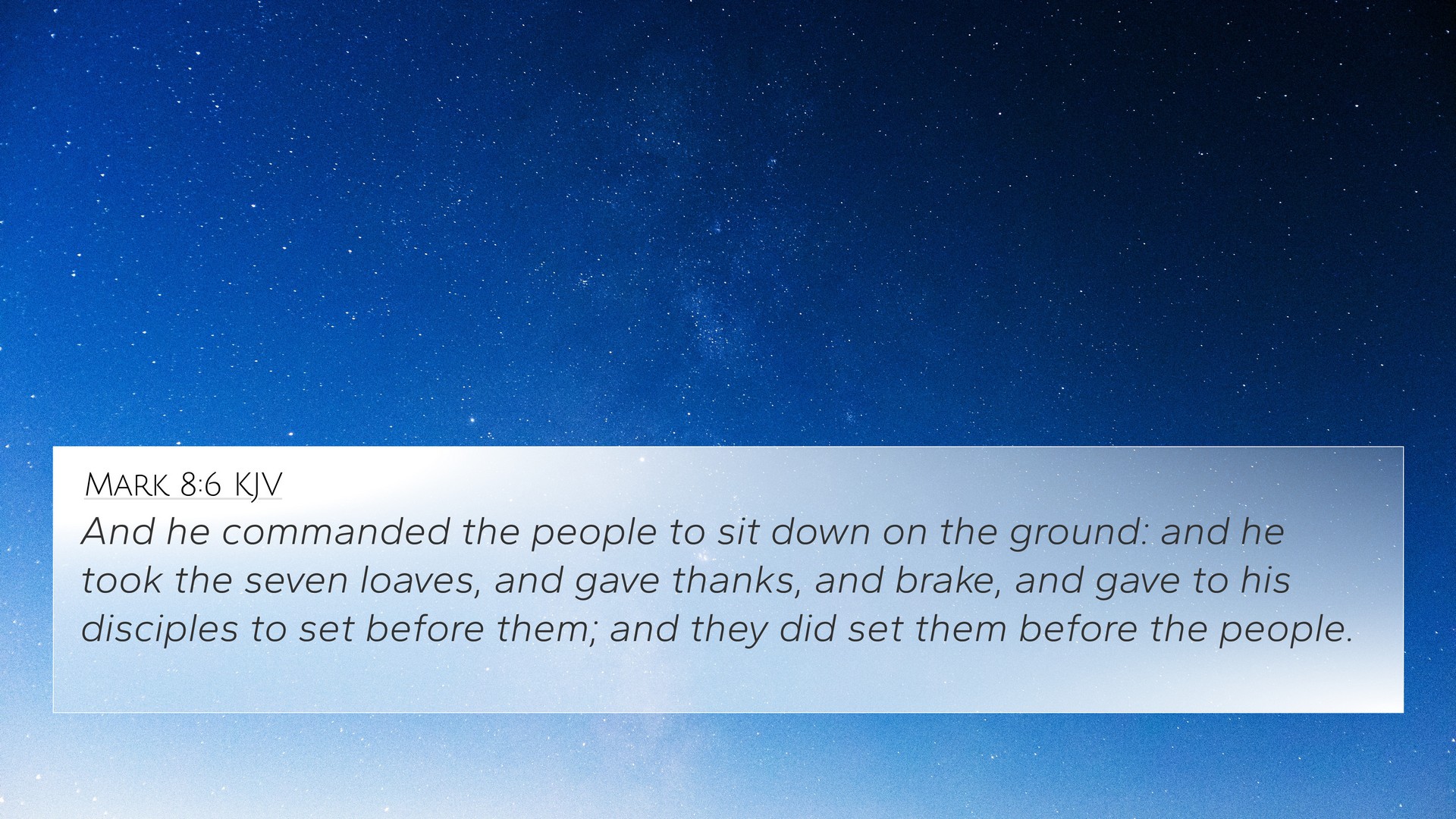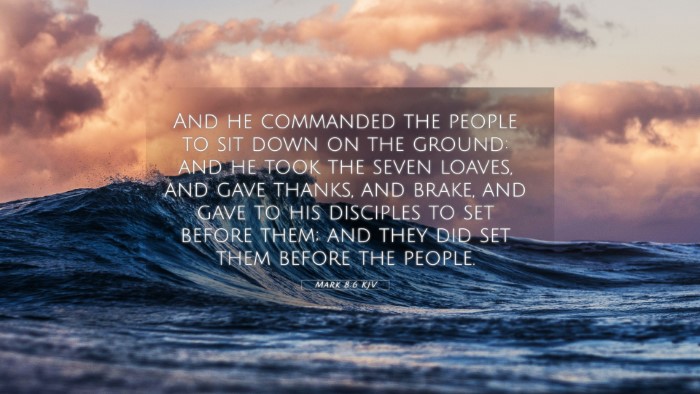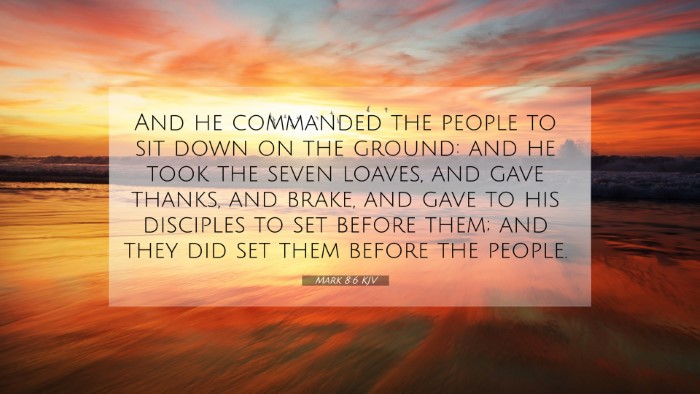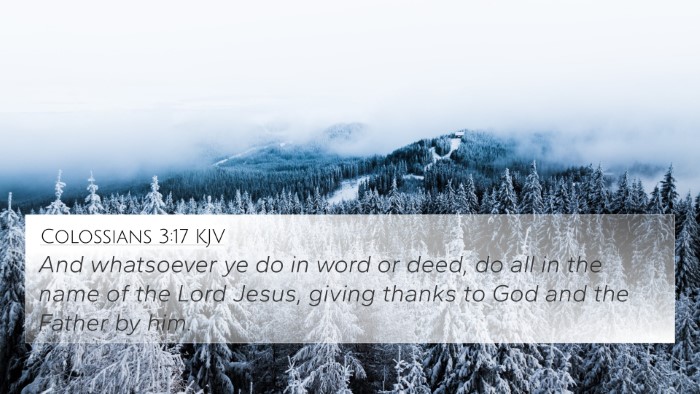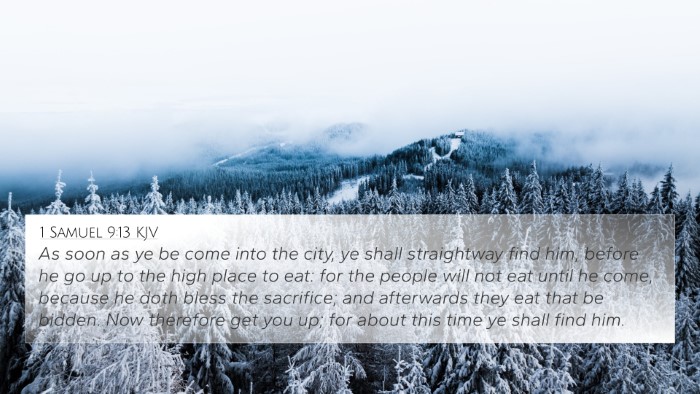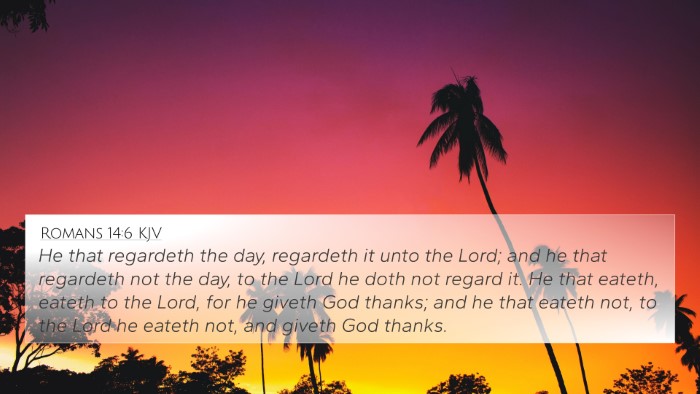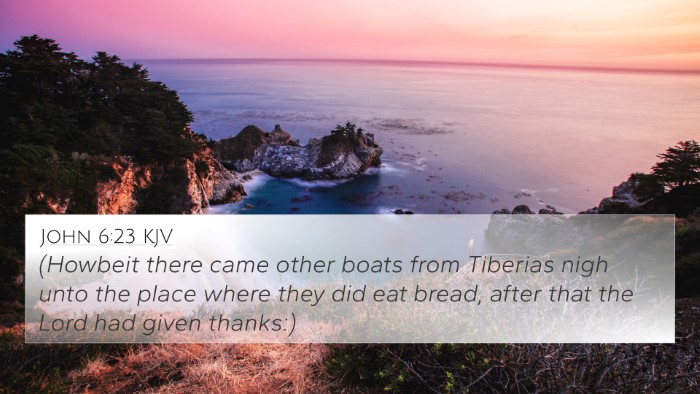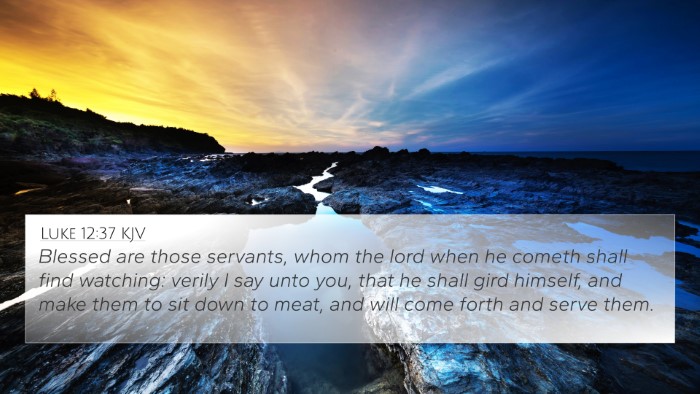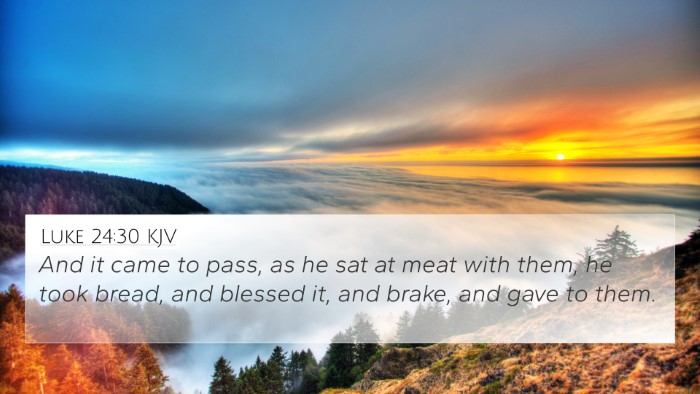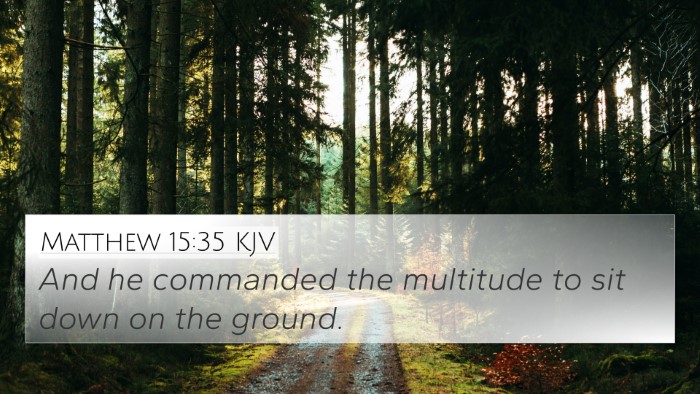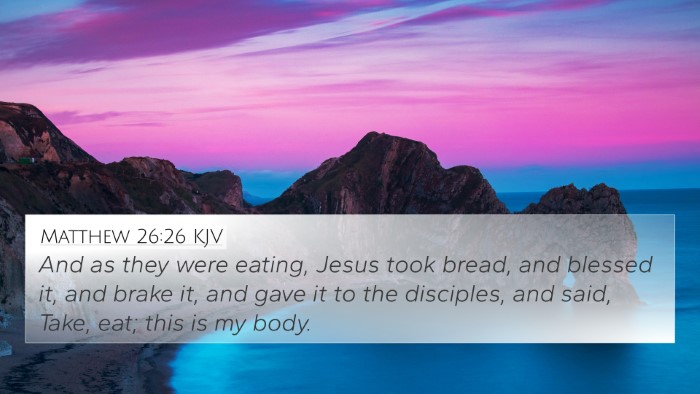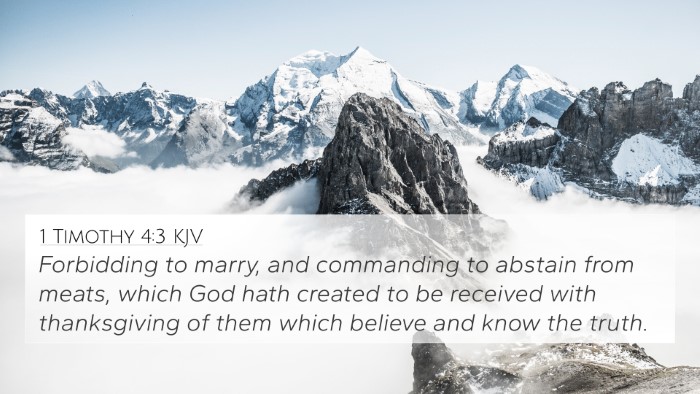Understanding Mark 8:6: A Comprehensive Analysis
Mark 8:6 (KJV): "And he commanded the people to sit down on the ground: and he took the seven loaves, and gave thanks, and brake, and gave to his disciples to set before them; and they did set them before the people."
Verse Summary
This verse describes a significant moment in the ministry of Jesus Christ, where he performs a miracle of feeding a large crowd with a limited amount of food. The action of Jesus giving thanks before breaking the loaves indicates his recognition of God’s provision and serves as a model for gratitude in the face of need.
Commentary Insights
Scholars like Matthew Henry, Albert Barnes, and Adam Clarke have provided valuable insights into the meaning of this verse. Together, their commentaries emphasize several key themes that can help enhance our understanding:
- Divine Provision: The miracle illustrates God’s ability to provide for our needs abundantly, even when resources appear limited. Jesus’ action in breaking the bread mirrors God's provision to the Israelites in the wilderness.
- Order in Miracles: The command to sit the people down on the ground, points to the orderliness of Jesus’ ministry. It highlights the importance of structured gatherings when receiving from God.
- The Role of Thanksgiving: Jesus giving thanks underscores the significance of gratitude in our interactions with God, illustrating that thanks should precede the reception of blessings.
- Disciples’ Participation: By engaging the disciples in distributing the food, the text reflects the collaborative nature of ministry. It suggests that Jesus involves his followers in His miraculous work, thus empowering them.
Cross-References to Mark 8:6
Understanding Mark 8:6 can be enriched by examining its connections to other Bible verses. Here are some notable cross-references:
- Matthew 14:19: "And he commanded the multitudes to sit down on the grass...". This parallel passage emphasizes the preparation for the miracle of feeding the five thousand.
- Luke 9:16: "Then he took the five loaves and the two fishes, and looking up to heaven, he blessed them...". Here, the theme of thanksgiving is reiterated, demonstrating a consistent practice of Jesus before miracles.
- John 6:11: "And Jesus took the loaves; and when he had given thanks, he distributed to the disciples...". This verse reinforces the actions taken during the feeding of the multitude, stressing the systematic approach of Jesus.
- Exodus 16:4: "Then said the Lord unto Moses, Behold, I will rain bread from heaven for you...". A direct connection to God's provision for the Israelites, reflecting the typology of Jesus as the Bread of Life.
- Psalm 134:2: "Lift up your hands in the sanctuary, and bless the Lord." This illustrates the necessity of worship and thanksgiving in the life of a believer.
- 1 Thessalonians 5:18: "In everything give thanks: for this is the will of God in Christ Jesus concerning you." This New Testament exhortation emphasizes the importance of gratitude.
- Isaiah 25:6: "And in this mountain shall the Lord of hosts make unto all people a feast of fat things...". This prophetic verse points to the future spiritual banquet God promises to His people.
Thematic Connections
Several significant themes emerge from Mark 8:6 that link to broader scriptural concepts:
- God's Care and Provision: The feeding of the multitudes is a recurring theme in the Gospels, recalling God's constant provision through miraculous means.
- The Importance of Community: The gathering of people and the distribution of food emphasize a communal aspect of faith, mirroring the communal gatherings in the early Church.
- Miraculous Signs: This miracle serves as a sign of Jesus' divine authority, linking the act to other miracles that demonstrate His power over nature and sustenance.
Comparative Studies
This verse provides an opportunity for comparative Bible verse analysis, particularly when looking at the accounts of the miracles in the Synoptic Gospels. The differences and similarities help to deepen our understanding:
- Identifying Discipleship: Each Gospel account illustrates a different aspect of discipleship, revealing how believers are called to participate in God’s work.
- Old and New Testament Dialogue: By linking Exodus and the Gospels, we see a thread of God's redemptive plan that runs throughout Scripture.
- Understanding Themes of Multiplicity: The feeding miracles signify abundance and the blessings that come from God when shared among the community.
Tools for Cross-Referencing
For those interested in exploring further, several tools and methods can enhance Bible verse cross-referencing:
- Bible Concordance: Useful for locating terms and themes across Scripture, facilitating study.
- Bible Cross-Reference Guide: Provides connections between related verses, aiding deeper study and understanding.
- Cross-Reference Bible Study: Adopting a methodical approach to explore connections enhances the thematic understanding of Biblical narratives.
- Bible Chain References: Linking related verses in a 'chain' allows for thematic exploration.
- Comprehensive Bible Cross-Reference Materials: Utilizing available resources to compendium cross-referenced themes.
User Intent Queries
This analysis can assist users with several inquiries related to Mark 8:6 and its context:
- What verses are related to Mark 8:6? The previously mentioned cross-references establish a link with related verses.
- How does Mark 8:6 connect with Old Testament provisions? Through various passages, especially in Exodus regarding manna.
- Find cross-references for Jesus’ miracles of feeding. Including accounts from the four Gospels for a cohesive understanding.
- Similarities between Mark 8:6 and John 6:11. Both verses highlight the practice of thanksgiving and community involvement in miracles.
- Bible verses that support the theme of provision. Many Psalms discuss God’s provision and care, correlating to this New Testament account.
Conclusion
Mark 8:6 serves as a profound example of Jesus' ministry characterized by divine provision, gratitude, and the call to engage others in the work of God. By utilizing tools for cross-referencing and engaging in comparative study, one can uncover the rich tapestry of themes that link various Bible verses together, providing a deeper understanding of God’s character and His dealings with humanity.
